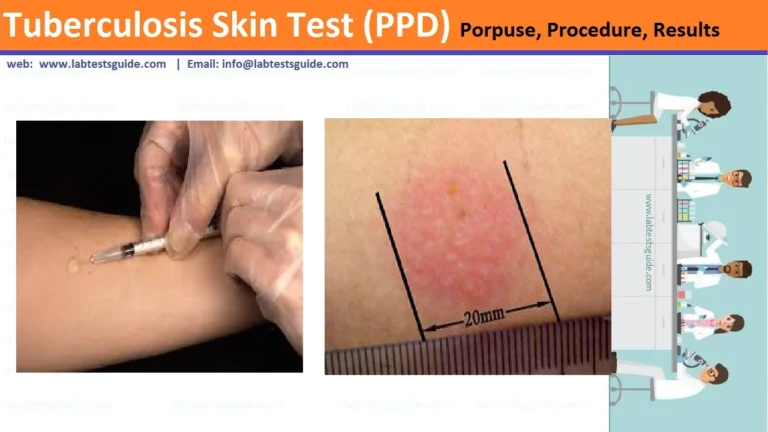Biochemical tests play a crucial role in identifying microorganisms by analyzing their metabolic and enzymatic activities. These tests are particularly significant in clinical microbiology labs for diagnosing bacterial infections and differentiating between bacterial species. They help detect the presence of specific enzymes, metabolic products, or the ability of microorganisms to utilize or degrade certain substrates.

Below is an overview of some of the most common biochemical tests used in microbiology:
Biochemical Tests in Microbiology
1. Catalase Test
Purpose: Detects the presence of the enzyme catalase, which breaks down hydrogen peroxide into water and oxygen.
- Reagent: Hydrogen peroxide (H2O2)
- Procedure: A small amount of the bacterial colony is added to hydrogen peroxide. If bubbles appear, the test is positive.
- Positive result: Bubbling (oxygen production) indicates catalase-positive organisms like Staphylococcus spp.
- Negative result: No bubbles indicate catalase-negative organisms like Streptococcus spp.
2. Oxidase Test
Purpose: Identifies bacteria that produce the enzyme cytochrome c oxidase, an essential component in the electron transport chain.
- Reagent: Oxidase reagent (tetramethyl-p-phenylenediamine dihydrochloride)
- Procedure: A bacterial colony is smeared on oxidase paper or reagent. A color change within 30 seconds indicates a positive test.
- Positive result: Purple color indicates oxidase-positive organisms like Pseudomonas spp.
- Negative result: No color change, suggesting oxidase-negative organisms like Escherichia coli.
3. Coagulase Test
Purpose: Detects the presence of coagulase, an enzyme that causes blood plasma to clot, used to differentiate Staphylococcus aureus from other Staphylococci.
- Reagent: Rabbit plasma
- Procedure: Bacteria are mixed with plasma and observed for clot formation.
- Positive result: Clot formation indicates coagulase-positive organisms (Staphylococcus aureus).
- Negative result: No clot indicates coagulase-negative Staphylococci.
4. Indole Test
Purpose: Determines the ability of an organism to produce indole from tryptophan, an amino acid, using the enzyme tryptophanase.
- Reagent: Kovac’s or Ehrlich’s reagent
- Procedure: Bacteria are grown in a medium containing tryptophan, and after incubation, Kovac’s reagent is added.
- Positive result: Red or pink ring at the top indicates indole production (Escherichia coli).
- Negative result: No color change indicates indole-negative organisms.
5. Urease Test
Purpose: Tests for the presence of urease, an enzyme that hydrolyzes urea into ammonia and carbon dioxide.
- Reagent: Urea broth or agar containing phenol red (pH indicator)
- Procedure: Bacteria are inoculated into urea-containing media. A color change indicates urease activity.
- Positive result: Pink color due to an increase in pH (alkaline environment), suggesting urease-positive organisms like Proteus spp.
- Negative result: No color change indicates urease-negative organisms.
6. Citrate Utilization Test
Purpose: Identifies organisms that can use citrate as their sole carbon source.
- Medium: Simmons Citrate Agar containing bromothymol blue (pH indicator)
- Procedure: Bacteria are inoculated onto the medium. Growth and color change of the medium indicate citrate utilization.
- Positive result: Blue color indicates the ability to use citrate (Enterobacter spp.).
- Negative result: No growth or color change, suggesting citrate-negative organisms (E. coli).
7. Methyl Red (MR) and Voges-Proskauer (VP) Test
Purpose: Differentiates bacteria based on their fermentation pathways—mixed acid fermentation (MR) or butanediol fermentation (VP).
- MR Test:
- Reagent: Methyl red (pH indicator)
- Positive result: Red color indicates strong acid production (E. coli).
- Negative result: Yellow color suggests less acid production.
- VP Test:
- Reagents: α-naphthol and potassium hydroxide
- Positive result: Red color indicates the production of acetoin (Enterobacter spp.).
- Negative result: No color change.
8. Triple Sugar Iron (TSI) Test
Purpose: Determines the ability of bacteria to ferment glucose, lactose, and sucrose and produce hydrogen sulfide.
- Medium: TSI agar slant with phenol red and iron salts
- Procedure: Bacteria are inoculated into the slant and butt of the medium. The results are read for gas production, H2S production, and sugar fermentation.
- Interpretation:
- Yellow slant/butt: Fermentation of glucose and lactose/sucrose
- Red slant/yellow butt: Glucose fermentation only
- Black precipitate: Hydrogen sulfide production
9. Nitrate Reduction Test
Purpose: Detects the ability of bacteria to reduce nitrate (NO3) to nitrite (NO2) or nitrogen gas (N2) through anaerobic respiration.
- Reagents: Nitrate reagent A (sulfanilic acid) and reagent B (α-naphthylamine)
- Procedure: Bacteria are inoculated into a nitrate broth. After incubation, reagents are added to detect nitrite production.
- Positive result: Red color after adding reagents (nitrite present) or gas in the Durham tube (nitrogen gas).
- Negative result: No color change, confirmed by adding zinc dust, which will reduce nitrate if it is still present.
10. Carbohydrate Fermentation Test
Purpose: Determines if an organism can ferment a specific carbohydrate (e.g., glucose, lactose, sucrose) and produce acid and/or gas.
- Medium: Broth containing the carbohydrate of interest, phenol red (pH indicator), and a Durham tube for gas detection.
- Procedure: Bacteria are inoculated in the medium and incubated.
- Positive result: Yellow color (acid production) with or without gas bubbles in the Durham tube.
- Negative result: Red or orange color (no acid production), indicating no fermentation.
Conclusion
Biochemical tests are essential tools in microbiology, providing valuable insights into the metabolic and enzymatic characteristics of microorganisms. By analyzing these tests, microbiologists can accurately identify bacteria, aiding in clinical diagnosis, research, and industrial applications. Understanding how these tests work and their applications is vital for laboratory professionals and students in the field.
Possible References Used




